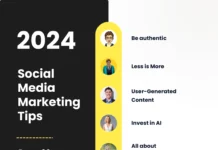The pandemic has managed to challenge the normal way of life we were used to thriving in. As true as this holds for our personal engagements, the challenges have also disrupted the way brands operate and will continue to do so. Marketing leaders from around the globe are busy redesigning their strategies by being mindful of the whole situation in a sensitive manner. They still want to be able to reach and engage with their audience especially when businesses have taken a huge hit. However, all of them are not doing it the right way, and let us tell you why it matters.
When the pandemic was in nascent stages, all of us witnessed a deviation in the pattern of the marketing emails that we usually received in our inboxes. The gush reduced gradually and the ones that we received talked about coming together in the times of need and doing possible things to gain the trust of their audience. With targeted promotions replaced by emails that talked about sentiments and solidarity, we came to a sudden realization of how deliverability of emails matters.
With the changing priorities where all of us are either working from home or struggling to stay safe while commuting to work, emotions are at an all-time high. Because we are around our smartphones and laptops all the time, and the wrong kind of email visiting the inbox at the wrong time is a personal disaster. This is why email deliverability is more important than ever. So, if you are a marketing professional from a brand that really wants to know what it takes to get their email deliverability practices right during the COVID-19 times, read on.

How to Avoid Email Deliverability Mistakes
Unsolicited emails
To begin with, as a brand, your topmost priority at the moment is to be empathic and supportive to your audience. This entails your email deliverability practices as well. It is going to be a very silly move if you send out unsolicited emails to your inactive/existing lists during this time when they are not anticipating it.
It is important to accept the fact that a huge email blast does not guarantee a good conversion rate. Not everyone in your lists needs to receive your email about this particular campaign. A smart thing to do is segment your emailing list based on the time period of interaction. People who responded or interacted with your emails in the past few months have a high chance of interacting against the ones who responded 2 years back. So, a little chop-chop is imperative if you don’t want to come across as a nagging brand for everyone dealing with the pandemic.
Piggybacking on the ‘COVID-19’ marketing wagon
As individuals, we cannot overlook the high number of brand emails received in the past 2 months that wanted to swoop in upon the opportunity and make a sales pitch around the COVID-19 outbreak. Pathetic, right? Acknowledging the crisis and benefitting off of it are two very different practices.
These sales pitch emails are downright frustrating because not everyone wants to start taking a webinar for digital marketing even when the company is offering a ‘40% Discount’ by using the code ‘COVIDOFF40’. A lot of emails are using these terms like slangs and unfortunately are getting kicked into the spam section of our email boxes because email clients are not ignorant. This applies to your pursuits for email marketing with WordPress and other platforms as well.
Activating inactive campaigns
All of us know how businesses faced temporary closures and shutdowns due to the global lockdowns happening everywhere. However, with organizations resuming their work and operations taking off from where they were left, one mistake that a lot of marketers are making is activating inactive/pending campaigns, without customizing them at all.
Trying to re-engage inactive email recipients for such campaigns is no good. And we say so because most people are not in a ‘spending-mode’ since earning capacities have been highly impacted by the outbreak and the eventual lockdowns. Not only will your organization appear insensitive, but your emails will also be massively marked as spam.
In order to not fall victim to unexpected deliverability issues such as being marked as spam, you can resort to using a reliable VPN service by shortlisting through the best market performers such as NordVPN vs. PIA.
Sudden email blasts
Email clients are more responsive at the moment in flagging emails as spam or bogus because people don’t want to interact with marketing messages. So, if your organization is planning occasional email blasts for whatsoever reasons, it is good to hold back and not embark on a half-baked mission. It is, however, recommended that if you were earlier running any such campaigns, you keep them consistent in a subtle manner.
Here are some additional DOs and DONT’s when it comes to ensuring that no email deliverability mistakes are being made:
- Be concise in your email messages
- Send out any unplanned email marketing messages only if absolutely necessary for your target audience.
- Segment your customer database before you copy and paste an entire emailing list to your new campaign’s recipient section.
- Blunt promotion in the name of Coronavirus is a big NO
- Do not make your brand emails an element that adds clutter without any value
- It is recommended to tone your COVID-19 messaging well, in case you plan to send any such emails
- Don’t broadcast the same email to everyone because not everyone is anticipating them.
- If there is any information/update that needs to go out to your mailing lists, make sure that you draft it properly so that the email clients don’t end up marking it as spam
Conclusion
Everyone operating in and around the business sphere is panicking. So, it is time to practice compassion and compliance when it comes to brand messaging in the format of emails. While it is absolutely imperative to stay in touch with your customers and ensure business continuity, it is also very important to respect the space of their email inboxes since many of them are either waiting to hear from their loved ones or are awaiting other important information. It is also equally important to edit your existing communication channels and weigh the impact of such messaging on your brand’s overall reputation.
See also: How do I email a cold outreach?











